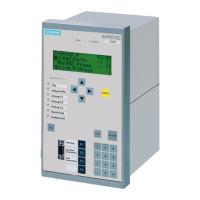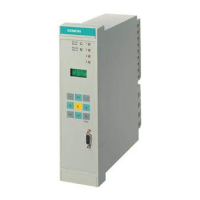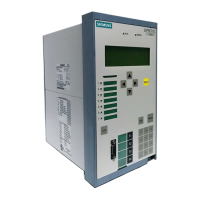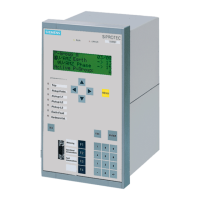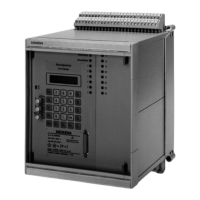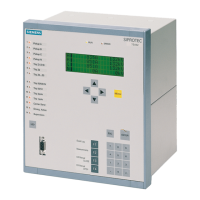Technical Data
10-10 7SJ63 Manual
C53000-G1140-C120-1
– Continuous Shock Half-sine shaped
IEC 60255–21–2, Class 1 Acceleration 10 g, duration 16 ms,
IEC 60068–2–29 1000 shocks in each direction of
3 orthogonal axes.
10.1.7 Climatic Stress Tests
Ambient Tempera-
tures
Standards: IEC 60255–6
– Recommended operating temperature +23°F to +131°F or –5 °C to +55 °C
Visibility of display may be impaired at
+131°F and above
– Limiting, temporary (transient)
operating temperatures – 4°F to +158°F or –20 °C to +70 °C
– Limiting temperatures for storage –13°F to +131°F or –25 °C to +55 °C
– Limiting temperatures for transport –13°F to +158°F or –25 °C to +70 °C
STORE AND TRANSPORT THE DEVICE WITH FACTORY PACKAGING.
Humidity Permissible Humidity Mean value per year ≤75% relative
humidity, on 56 days of the year up to 93%
relative humidity.
CONDENSATION MUST BE AVOIDED
Siemens recommends that all devices be installed such that they are not exposed to
direct sunlight, nor subject to large fluctuations in temperature that may cause conden-
sation to occur.
10.1.8 Service Conditions
The protective device is designed for use in an industrial environment and an electrical
utility environment. Proper installation procedures should be followed to ensure elec-
tromagnetic compatibility (EMC). In addition, the following are recommended:
• All contactors and relays that operate in the same cubicle, cabinet, or relay panel
as the numerical protective device should, as a rule, be equipped with suitable
surge suppression components.
• For substations with operating voltages of 100 kV and above, all external cables
should be shielded with a conductive shield grounded at both ends. The shield must
be capable of carrying the fault currents that could occur. For substations with lower
operating voltages, no special measures are normally required.
• Do not withdraw or insert individual modules while the protective device is ener-
gized. When handling the modules or the device outside of the case, standards for
components sensitive to electrostatic discharge (ESD) must be observed. The mod-
ules and device are not endangered when inserted into the case.
www . ElectricalPartManuals . com
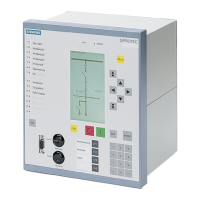
